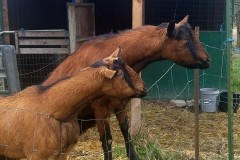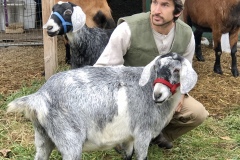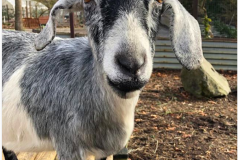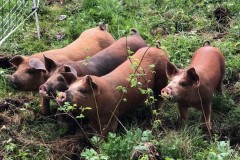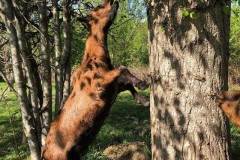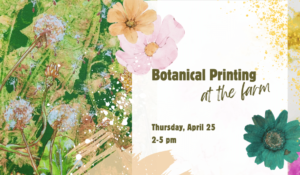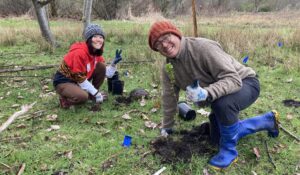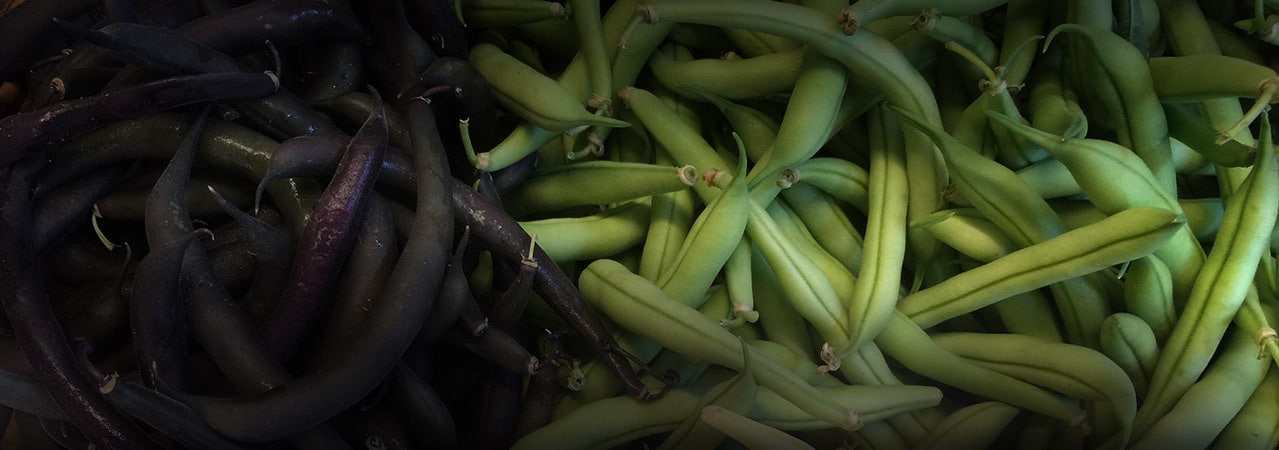
The Role of Animals on a Regenerative Farm
The Role of Animals on a Regenerative Farm
- posted on: June 23, 2020
- posted by: Robin Crowder
"*" indicates required fields

Hi, I’m Anthony Reyes and I run the farm operations here on the 21 Acres campus. We have about 5 production acres on the farm and grow mostly mixed vegetables. I’ve been farming in Washington and California for more than 10 years, mostly recently at the Homeless Garden Project in Santa Cruz, and am glad to be back growing in the Pacific Northwest. One of our main agricultural objectives here at 21 Acres is to successfully manage the complex systems that factor into land stewardship. That means we look at the soil microbes, pH levels, organic matter, climate changes, ecosystem services, community impact, and much more — all of these factors play a part in our soil health plan, land stewardship, and the larger food system.
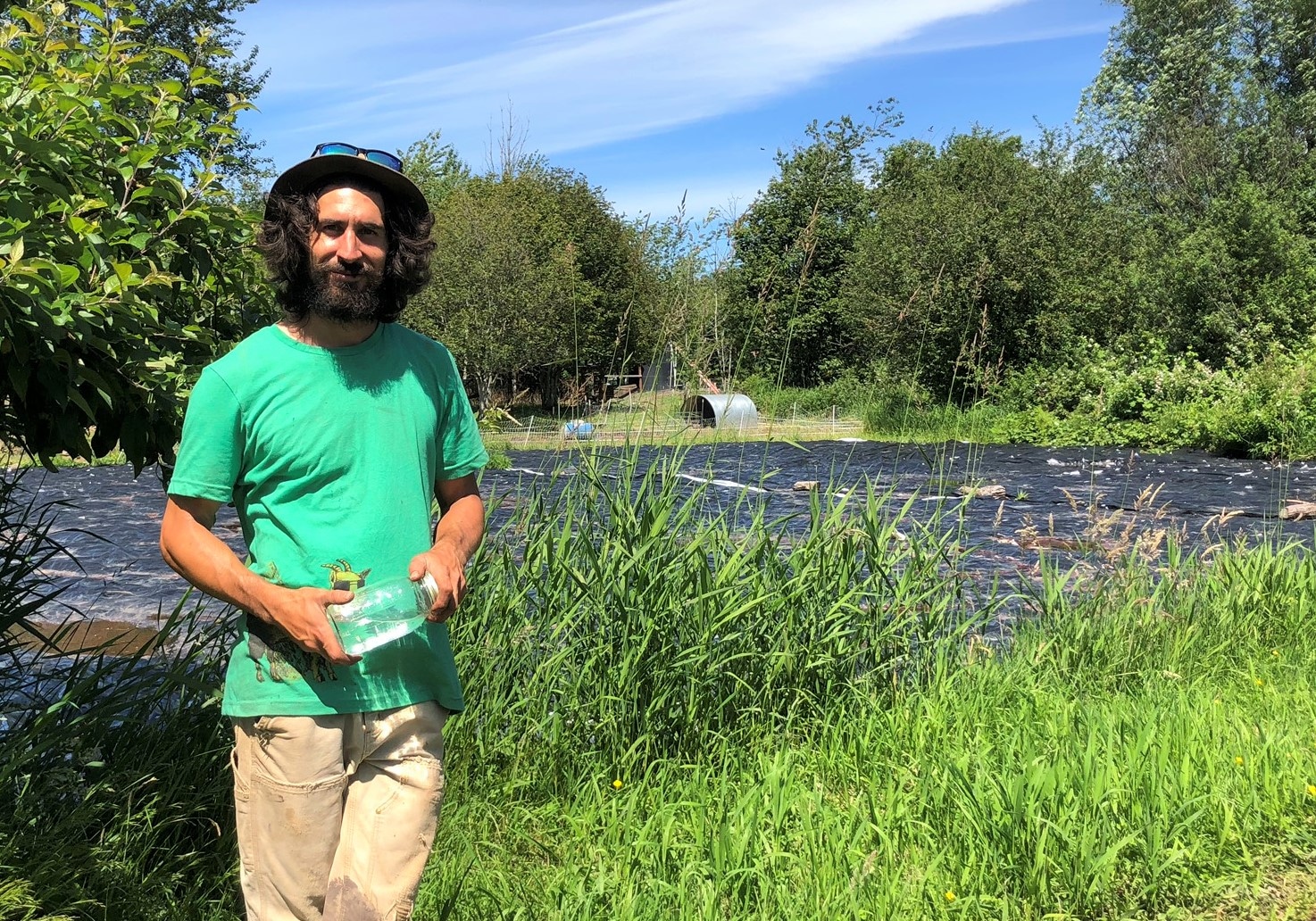
Over the years I have had to opportunity to observe and participate in many different approaches to farming, some of which included the incorporation of farm animals into the overarching land stewardship plan. Many farmers successfully manage the delicate and critical formula for healthy soil without the addition of livestock on their property. However, for those of us who choose to bring animals onto the farm, identifying and utilizing the animals as part of the larger farming and land stewardship system can have a powerful impact. Curious about the benefits animals can bring to the farm? Read on for a bit of my own humble insight.
Fertilizer. This one is pretty obvious, right? Most of us will quickly identify manure, and all its other synonyms, as a major benefit of livestock. As animals are strategically grazed through fallow areas of the farm, orchard rows, and perennial spaces, they leave behind this natural fertilizer. Rather than importing manure and fertilizer from outside sources, farmers incorporating livestock add another layer of fertility alongside complex fertilization and crop rotation plans.
But is this fresh fertilizer safe to use? With the right planning, yes. Food safety is key to farmers and guidelines from Organic certification boards set clear requirements when it comes to fresh manure in production fields. Timing is important when managing the rotation of your livestock. We never have fresh manure coming into contact with our harvested produce – we wait at least 90 days before harvesting fruiting crops and 120 days for greens, shoots, and roots.
Pest Control. Allowing chickens, ducks, geese, or other fowl to forage and scratch through fields and orchards is another tool to combat pests. Our own small flock of chickens are spending the spring in our dwarf apple orchard. Last year we had a fair amount of damage to our fruit from apple maggots. Those larvae over-winter in the soil and hatch in the spring; as we watch the chickens scratch up and hunt through the soil in the orchard we are hoping they make a big dent in the maggot population this year. This infusion of natural protein in the flock’s diet also ensures a bright orange yolk in our eggs.
Residue Removal. We also look to livestock as a means of managing damaged crops and leftover residue in fields. Residue is often the result of cover crops planted in the fields to prevent soil erosion and to address soil health concerns. Grazing animals can forage this material to reduce the farm’s feed costs. Pigs are often run through fields directly after harvests to quickly glean left-behind vegetable crops that have too much pest or pathogen damage to harvest for human consumption. Left longer in the field, pigs provide additional fertilization and cultivation by constantly rooting for roots and grubs with their powerful snouts.
Restoration. One of the most interesting qualities of livestock is their ability and effectiveness to help with restoration work. Have you already met our four goats at the 21 Acres farm? Bells, Liberty, Skippy, and Lucky help us with invasive control. They efficiently graze back the reed canary grass and keep the Himalayan Blackberry at bay in their pasture —unlike people, goats love eating the spiny blackberry leaves.
Many large-scale habitat restoration efforts use cattle, goats, and sheep, usually on projects tackling the restoration of large grasslands. This is a very delicate balance as overgrazing can destroy the land you are working to restore. Again, timing is everything. Many invasive prairie grass are annuals, while natives tend to be more perennial. If you run cattle, goats or sheep at the proper time, they eat the annual grasses prior to maturation and allow the native populations to out-compete invasive grasses. This practice of restoration through systematic grazing takes 30+ years to reach peak effectiveness, but farmers involved in restoration work know a long-term solution often requires and long-term commitment to behavior change.
Carbon Sequestration. Livestock can play a huge role in carbon sequestration and are a popular aspect of what is referred to as “carbon farming.” Carbon Farming is the process of sequestering atmospheric carbon in the soil through your agricultural processes.
This is a very complex topic that is currently being experimented with and studied around the world. Let me try and simplify it just a bit. When talking about carbon sequestration, we are really talking about photosynthesis and the amount of carbon pulled from the air and held in the roots and soil through that process. When grasses are mature enough to be grazed, livestock can mow the prairie land which allows another flush of growth to perform more photosynthesis and store even more carbon in the soil.
———————————
Are you interested in learning more about the benefits of incorporating livestock into a farming system? Try these sources for more information:
Integrating Livestock in the Garden – By Marie Williamson and William Lyons
http://organicgrowersschool.org/wp-content/uploads/2013/12/41.-Livestock-in-the-garden.pdf
University of Washington’s Conservation Magazine covers “How Grazing Could Restore California’s Grasslands”.
https://www.conservationmagazine.org/2015/01/how-grazing-could-restore-californias-grasslands/
What is Carbon Farming? Learn the basics from Marin Carbon Project and take advantage of their Student Lesson Guide.
https://www.marincarbonproject.org/carbon-farming
https://www.marincarbonproject.org/document.doc?id=111
Fibershed helps connect the dots between a viable regional fiber system and restoring and building soil.
Anthony is the Farm Operations Lead at 21 Acres. He comes with over a decade of experience in crop production and sustainable agriculture, working on and managing farms in California, Oregon, and Washington. Anthony focuses on the intersection of agriculture and social justice with a strong passion for everything farming and loves going into long rants about agricultural processes and systems. He is most recently coming from Santa Cruz, CA where he managed the Homeless Garden Project farm. Prior to that, he worked with Tilth Alliance managing the two Seattle Youth Garden Works farm sites and overseeing production spaces and farm programs on the Rainier Beach Urban Farm and Wetlands. Anthony remains an active member of the WA sustainable farming community. When not on the farm you can find him trekking the beautiful PNW landscapes, playing bluegrass music, or spending quality time with good friends.











 back to blog overview
back to blog overview

